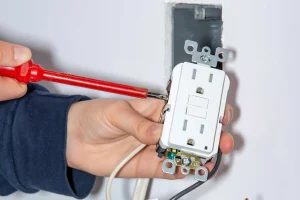You’re a designer with a vision. You have big plans for your design studio, but you know that finding the perfect property to bring those plans to life is no easy feat. It can be overwhelming trying to navigate the complexities of real estate and find a space that meets all of your needs and requirements. But fear not! With some careful planning and consideration, you can find the perfect property for your design studio.
First things first, you need to assess your specific requirements. What do you need in a space to make it work for your business?
Are you looking for an open concept layout or separate rooms for different departments?
Will you require access to natural light or outdoor space?
These are all important factors to consider before beginning your search. By having a clear understanding of what you need from a property and benefits of buying a property, it will be easier to narrow down potential options and avoid wasting time on properties that don’t meet your criteria.

Assessing Your Specific Requirements
You’ll want to take a moment to think about what you need in terms of space and location, but don’t worry – this won’t be as overwhelming as it may seem.
Start by assessing your specific requirements for the perfect property for your design studio. Consider the size of your team and whether you need private offices or collaborative workspaces. Think about how much storage space you require and if natural lighting options are important for your creative process.
Additionally, consider if you need an area for client meetings or a receptionist desk. By taking the time to evaluate these factors, you can narrow down your search criteria and find a property that meets your needs.
Once you have considered all of these elements, it’s time to move onto the next step: location, location, location!
Location, Location, Location!
If you want to attract the right clients and talent, it’s crucial to consider location as a top priority for your studio. A prime location can provide neighborhood amenities that make life easier for you and your employees, such as restaurants, cafes, and fitness centers.
It can also offer transportation accessibility through nearby train or bus stations or easy access to major highways. It’s important to research the area thoroughly before making a decision, taking into account factors like safety, parking options, and noise level.
Once you’ve narrowed down your preferred locations, weigh the pros and cons of each one against your specific business needs before making a final decision. From there, you’ll be able to move on to size and layout considerations with confidence in knowing that your chosen location provides the best possible foundation for success.
Size and Layout Considerations
Determining an optimal size and layout for your studio is a critical step in ensuring efficient operations, maximizing productivity, and creating a welcoming atmosphere for clients and employees alike.
Consider the number of team members you have or plan to hire in the future, as well as any collaborative spaces required for brainstorming sessions or group meetings. Additionally, be aware of any zoning restrictions that may limit the amount of space you can use for commercial purposes.
When designing the layout of your studio, prioritize functionality by placing frequently used equipment within reach and organizing workstations based on workflow. It’s also important to create comfortable spaces for both employees and clients, such as lounge areas or private meeting rooms.
By taking these factors into account when determining the size and layout of your studio space, you can ensure that it meets all your business needs while providing an inviting environment that fosters creativity.
Moving forward into budgeting for your dream studio space, consider ways to balance costs without compromising on quality or functionality.
Budgeting for Your Dream Studio Space
Building your dream studio space is like putting together a puzzle – each piece must fit seamlessly into the budget without sacrificing creativity or functionality.
Before beginning your search, consider your funding options and determine your budget. This will help you narrow down properties that are realistic for you to rent or buy.
When deciding between renting or buying, take into account long-term goals and financial stability. Renting may be more flexible in terms of location and size, but buying can provide a stable investment and potentially save money in the long run.
Don’t forget to factor in additional costs such as utilities, maintenance fees, and taxes when creating your budget.
With proper planning and consideration of funding options, finding the perfect property for your design studio can become a reality.
Conclusion
Congratulations, you’re now equipped with the knowledge and tools to find the perfect property for your design studio!
Remember to assess your specific requirements and prioritize them when searching for a space. Location is key, so research the area thoroughly before making any decisions. Size and layout considerations are also important factors to take into account.
Lastly, don’t forget about budgeting for your dream studio space. While it may be tempting to overspend on a beautiful location or larger space than you need, it’s crucial to stay within your means and ensure that your business can sustain itself in the long run.
With these tips in mind, go forth and find the perfect property that will inspire creativity and foster growth in your design studio! So why wait? Start exploring properties today and envision how they could fit into your dream studio setup. Who knows – maybe you’ll stumble upon an unexpected gem that perfectly aligns with all of your needs.
The possibilities are endless, so embrace this exciting new chapter of finding your ideal workspace!
You may also like to read:
Design Your Dream Home with Consultation Experts

